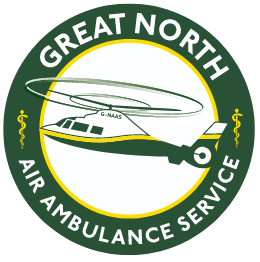Have you ever wanted to know just what GNAAS pilots get up to during their 12 hour days on shift?
At the Great North Air Ambulance Service (GNAAS), pilots are an integral part of the critical care team. After all, no pilot means no helicopter.
Nigel Lynch has been a pilot with the charity since February 2021, before that, he had an extensive career in the military working all over the world and flying search and rescue helicopters over the North Sea.
Holly Taylor interviewed Nigel to find out how a day on duty at GNAAS runs…
7.30am
The pilots always arrive first on base ready to start the day.
The first thing we do is carry out checks to make sure we’re good to go if we’re tasked to an incident.
- We need to check the weather to make sure that there is nothing preventing us from flying like low cloud, reduced visibility due to fog, mist, snow, or haze.
- We also must be aware of the freezing level that day in certain areas which is when the temperature of the cloud is 0 degrees or below.
- We then use an online system to look at the daily NOTAMS to check any activity or obstacles that we need to be aware of that day like range danger areas, military exercises, cranes, paragliders, or drones.
- Next on the list is to look at our electronic flight book on the iPad to check that maps and charts are up to date in the region. Both I and the paramedic carry an electronic flight book!
- I then calculate the mass and balance of the aircraft based on temperate and atmospheric pressure. Basically, this means I calculate the weight of the crew who will be flying with me plus fuel to work out our take-off weight as it must meet certain criteria before we can fly.
- I then check the aircraft technical log – this is a document we carry on every flight in a fireproof bag which states things like when the helicopter was last serviced and how long until the next one.
- The technical log also contains information like where we fly to, at what time, how many times we’ve landed, and where we landed.
7.40am
It’s now time to check over the aircraft for the morning and prepare her for flight!
- We always do a visual inspection of the aircraft and check things like lights, leaks, panels, plugs, engines and blades.
- I’ll then get out the base fire extinguishers.
- Then I will check our onsite fuel system and complete a water-sediment test with sort of litmus paper to check whether the fuel is contaminated with any water. If it is, I need to flush the fuel lines until it is clear or we can’t use the fuel.
7.55am
The aircraft is now on the helipad and we’re online for the day!
8.00am
I’ll make myself a coffee now and prepare the morning brief for the crew on duty which is really important.
- My morning brief will contain information about the weather, anything the crew needs to be mindful of, aircraft updates, and safety information.
10.00am
We can be activated at any time and across the year, it usually works out that GNAAS are called out on average around four times a day.
The paramedic on the air desk that day will decide if they are going to task the team to a job and, if time allows, I will start to prepare.
- I will check google maps to find out where the job is and a potential landing site.
- I will check the latitude and longitude so I can use the aircraft navigation kit more accurately.
- I will then call air traffic control at Teesside and tell them where we are heading and run out to the aircraft.
- We complete the pre-start checks and get clearance to depart and we’re on our way.
10.30am
Flight times vary depending on where in the region we are responding to. We can cover 14 miles in 5 minutes.
- I find a suitable landing site based on, shape, size surface, surroundings, slope and landing diameter.
- Once it’s safe to do so, we can shut down the rotors and get out.
- The team will run to the job, and I will stay with the aircraft, complete checks to make sure everything is working, and more often than not, people come and ask me questions on scene.
- I’ll record the landing site and take photos (of the aircraft) for our media team back at base and wait for the team to return.
- I will always help with the carrying of the kit and with the patient when necessary.
- Depending on the treatment they’ve given I will clean the aircraft at the hospital and wait for their return.
- Clearance to depart and we’re off back to base or to another call-out!
2.00pm
- Once we land back on base my first priority is to refuel and then complete more checks and update all of our logs.
- I’ll turn the aircraft around and make sure we have two hours of endurance to be able to fly again.
- Hopefully the team can grab our lunch now and then from there, the rest of day works the same!
- Depending on darkness and what time we will stop flying, I will then prepare for the morning to do it all again
Together we can secure the future of critical care.
This year, we need to raise £6.4 million to guarantee we can continue our life-saving mission.
Donate



